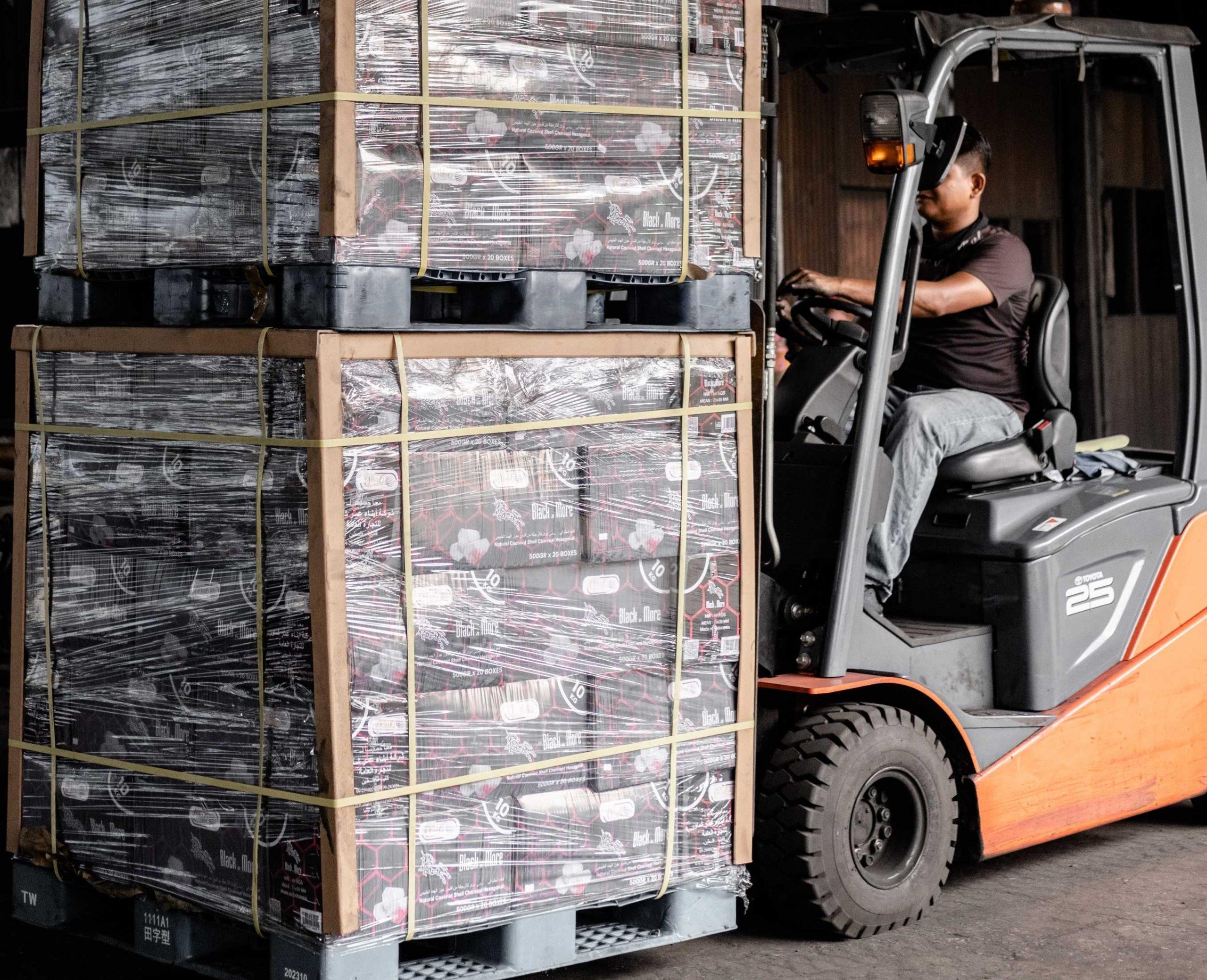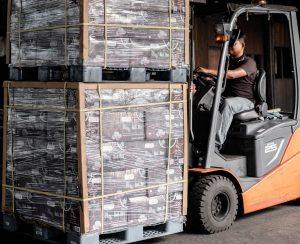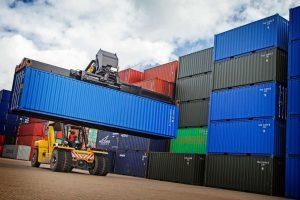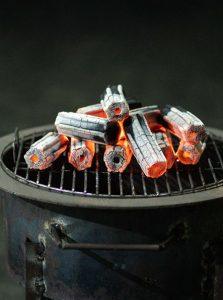Shipping a charcoal grill may seem straightforward, but without proper preparation, it can lead to costly damage or unexpected shipping fees. Whether you’re moving to a new home, selling a grill online, or sending one as a gift, ensuring it arrives safely requires careful planning.
In this guide, we’ll walk you through the best practices for shipping a charcoal grill, covering everything from packaging techniques to choosing the right shipping carrier. We’ll also discuss common challenges, cost factors, and how to protect your grill during transit. By the end, you’ll have a clear, step-by-step approach to shipping your grill securely and affordably.
How to Package a Charcoal Grill for Shipping
Proper packaging is the key to ensuring your charcoal grill arrives at its destination undamaged. Since grills come in various sizes and shapes, careful wrapping, padding, and securing of parts are essential. Here’s a step-by-step guide to packaging your grill safely.
Step 1: Clean the Grill Thoroughly
Before packaging, remove any charcoal, ash, and grease buildup. This prevents messes during transit and ensures compliance with shipping regulations.
- Empty out all charcoal and ash from the grill.
- Scrub the grates and interior with a grill brush.
- Wipe down all surfaces with a damp cloth and let them dry completely.
Step 2: Disassemble Removable Parts
Breaking the grill down into smaller components makes it easier to pack and reduces the risk of damage.
- Remove grates, trays, side shelves, and any detachable handles.
- Secure any loose hardware (screws, nuts, and bolts) in a labeled plastic bag.
- If the grill has wheels, consider detaching them to prevent movement during shipping.
Step 3: Wrap and Protect Each Part
Using the right packaging materials helps absorb shocks and prevents scratches or dents.
- Bubble wrap: Wrap delicate parts such as grates and shelves with multiple layers.
- Foam inserts: Place foam between metal parts to prevent them from rubbing against each other.
- Heavy-duty cardboard or plywood sheets: Use these to reinforce the grill’s frame, especially for larger models.
Step 4: Choose a Sturdy Shipping Box or Crate
Select a box or crate that’s large enough to fit the grill with ample padding but not so large that the grill moves around excessively.
- For small or portable grills, a double-walled cardboard box with reinforced edges is sufficient.
- For large or heavy-duty grills, consider using a wooden crate for maximum protection.
- Fill any empty spaces with packing peanuts, foam padding, or crumpled paper to prevent shifting.
Step 5: Seal and Label the Package Properly
A well-sealed package prevents damage during handling.
- Use heavy-duty packing tape to seal all edges and seams.
- Mark the box with “FRAGILE” and “THIS SIDE UP” stickers.
- If using a freight service, attach a packing slip with recipient details and shipping instructions.
Choosing the Best Shipping Carrier
Selecting the right shipping carrier is crucial for ensuring your charcoal grill arrives safely and affordably. Different carriers offer various services, pricing structures, and handling methods for large items. Here’s a breakdown of the best options for shipping a grill and what to consider when choosing a carrier.
Top Shipping Carriers for Charcoal Grills
- UPS
- Best for: Medium-sized grills, standard and express shipping
- Pros: Reliable tracking, insurance options, and door-to-door delivery
- Cons: Size and weight restrictions may apply for larger grills
- FedEx
- Best for: Small to mid-sized grills, express shipping
- Pros: Competitive pricing, good tracking system, and packaging assistance
- Cons: May be more expensive than freight options for large grills
- Freight Carriers (LTL Shipping – Less Than Truckload)
- Best for: Large and heavy grills
- Pros: Ideal for oversized shipments, lower costs per pound, and palletized shipping for extra security
- Cons: Requires additional handling (pickup/drop-off at a freight terminal)
- UShip (Marketplace for Independent Carriers)
- Best for: Finding competitive rates from various carriers
- Pros: Flexibility in choosing a shipping provider, potential for lower costs
- Cons: Service quality may vary depending on the selected carrier
How to Compare Shipping Options
- Cost vs. Speed: If time isn’t a concern, freight shipping or standard ground shipping can be more cost-effective. For fast delivery, opt for express services.
- Package Handling: Check if the carrier provides extra handling for fragile or large items. Freight carriers often use pallets for added protection.
- Insurance Availability: Ensure the carrier offers insurance options to cover any potential damage during transit.
- Tracking and Support: A carrier with a robust tracking system can help you monitor the grill’s journey and address any delays.
Best Choice Based on Grill Size
| Grill Size | Recommended Carrier | Best Shipping Method |
| Small (Portable Grills) | UPS, FedEx | Standard Ground Shipping |
| Medium (Standard Charcoal Grills) | UPS, FedEx, Freight | Ground or LTL Freight |
| Large (Heavy-Duty or Custom Grills) | Freight Carriers, UShip | Palletized Freight Shipping |
Choosing the right carrier ensures your grill arrives safely without unnecessary costs or delays.
Shipping Costs: Factors That Affect the Price
The cost of shipping a charcoal grill can vary significantly based on several factors, including size, weight, destination, and shipping speed. Understanding these factors can help you make cost-effective shipping decisions.
Key Factors That Impact Shipping Costs
1. Weight and Dimensions
- Larger and heavier grills cost more to ship due to extra handling and space requirements.
- Shipping carriers calculate costs using dimensional weight (DIM weight), which considers both size and actual weight.
- Example: A compact portable grill will be far cheaper to ship than a full-sized barrel-style charcoal grill.
2. Shipping Distance
- Longer distances increase shipping costs, especially for cross-country or international shipments.
- Local vs. National Shipping: Sending a grill within the same state is usually much cheaper than shipping it across the country.
- International Shipping: Additional taxes, duties, and customs fees may apply when shipping outside the U.S.
3. Shipping Speed
- Standard Ground Shipping (5-7 days) is the most budget-friendly option.
- Express Shipping (2-3 days) can be significantly more expensive but ensures faster delivery.
- Freight Shipping for oversized grills offers economy options, but faster freight services increase the price.
4. Packaging and Handling Fees
- Using carrier-approved packaging materials may come at an extra cost.
- Some carriers charge special handling fees for large, oddly shaped, or heavy packages.
- If you require professional crating or palletizing, expect additional fees.
Estimated Shipping Costs by Grill Type
| Grill Type | Approx. Weight | Estimated Cost (Domestic U.S.) | Best Shipping Option |
| Small Portable Grill | 15-30 lbs | $30 – $80 | UPS/FedEx Ground |
| Medium Charcoal Grill | 50-100 lbs | $100 – $250 | Freight (LTL) |
| Large Barrel or Kamado Grill | 150+ lbs | $250 – $600 | Palletized Freight |
Note: Prices vary depending on carrier rates, distance, and additional services like insurance or white-glove delivery.
How to Save on Shipping Costs
- Compare Carrier Rates: Use online shipping calculators from UPS, FedEx, and freight companies to find the best rate.
- Disassemble the Grill: Reducing package size lowers dimensional weight charges.
- Use Freight Shipping for Heavy Grills: It’s often cheaper than oversized parcel shipping.
- Look for Shipping Discounts: Some carriers offer discounts for business accounts or bulk shipments.
Understanding these cost factors allows you to budget effectively and choose the best shipping option for your charcoal grill.
Insurance and Tracking for Shipping a Charcoal Grill
When shipping a charcoal grill, protecting your investment is crucial. High-value or fragile items can be lost or damaged during transit, making insurance and tracking essential for peace of mind. Here’s how to ensure your grill is covered and track its journey effectively.
Why Shipping Insurance Is Important
- Covers damage, loss, or theft of your grill while in transit.
- Essential for expensive or custom grills that may be costly to replace.
- Some carriers offer limited liability coverage, but full insurance provides better protection.
Where to Get Shipping Insurance
- Carrier-Provided Insurance
- UPS and FedEx offer insurance for declared values up to $50,000 for high-value items.
- Freight carriers provide cargo insurance, often based on weight rather than item value.
- Cost: Typically $1-$3 per $100 of declared value.
- Third-Party Shipping Insurance
- Companies like Shipsurance, U-PIC, or Secursus offer more affordable coverage than carriers.
- May cover damage due to mishandling, which some carrier policies exclude.
Best Practices for Insuring a Charcoal Grill
- Declare the Full Value: Underestimating the value to save on fees may result in lower reimbursements.
- Take Photos Before Shipping: Document the condition of the grill before packing.
- Keep All Receipts: Proof of purchase and shipping receipts help in case of a claim.
How to Track Your Shipment
- Carrier Tracking Services
- UPS & FedEx: Real-time tracking updates via website or mobile app.
- Freight Carriers: Pro number (tracking ID) provided for status updates.
- GPS-Based Tracking (For High-Value Items)
- Some services allow GPS-enabled tracking devices for real-time location monitoring.
- Set Up Delivery Alerts
- Sign up for email/SMS notifications to stay updated on delivery progress.
What to Do If Your Shipment Is Delayed or Lost
- Check Tracking Updates: Contact the carrier if there’s no movement for 48+ hours.
- File a Claim for Loss or Damage: Most carriers require claims to be filed within 30-60 days of shipment.
- Contact Customer Support: Freight carriers often require direct communication for lost shipments.
Common Shipping Challenges and How to Avoid Them
Shipping a charcoal grill comes with unique challenges, from potential damage to unexpected delays. Understanding these risks and taking preventive measures can help ensure a smooth shipping process.
1. Damage During Transit
Problem: Grills are made of metal, glass, and other fragile components that can dent, bend, or break if mishandled.
How to Avoid It:
- Use heavy-duty packaging: Reinforce the box with double-walled cardboard or a wooden crate for extra protection.
- Cushion all parts: Wrap grates, trays, and delicate pieces in bubble wrap and secure them with foam padding.
- Label as fragile: Mark the package with “FRAGILE” and “THIS SIDE UP” to encourage careful handling.
2. Shipping Delays
Problem: Large or heavy packages often take longer to process, leading to unexpected delays.
How to Avoid It:
- Choose the right shipping method: Freight carriers and ground services may have different transit times. Pick express options if time-sensitive.
- Ship early: Avoid peak seasons (holidays, summer grilling season) when shipping volume is high.
- Track shipments: Use tracking services to monitor movement and catch delays early.
3. Shipping Restrictions on Charcoal and Grills
Problem: Some carriers have restrictions on shipping grills that contain charcoal or flammable residues.
How to Avoid It:
- Clean the grill thoroughly: Remove all charcoal, ash, and fuel residue before shipping.
- Check carrier regulations: Some companies may have specific guidelines for shipping grills or large metal items.
- Verify destination restrictions: Certain international locations may have import regulations for used grills.
4. High Shipping Costs
Problem: Large and heavy grills can be expensive to ship, especially for long distances.
How to Avoid It:
- Compare rates from multiple carriers: Use online calculators from UPS, FedEx, and freight providers to find the best price.
- Disassemble the grill: Breaking it down into smaller parts may reduce shipping costs by lowering package size.
- Use freight for large grills: Less-than-truckload (LTL) freight is often cheaper than oversized parcel shipping.
5. Lost or Misplaced Shipments
Problem: Large packages can sometimes be misplaced during transit, especially in freight shipping.
How to Avoid It:
- Use a carrier with reliable tracking: Ensure the grill is shipped with a service that offers real-time updates.
- Add a backup shipping label inside: If the exterior label is lost, an interior label with recipient details can help reroute the package.
- Opt for insurance: If the grill is lost, shipping insurance can cover the cost of replacement.
Conclusion
Shipping a charcoal grill may seem like a complex process, but with the right preparation, you can ensure a smooth and secure delivery. The key steps include properly packaging the grill, selecting a reliable shipping carrier, understanding cost factors, and investing in insurance and tracking for peace of mind.
To minimize risks, clean and disassemble the grill, use protective packaging materials, and compare shipping options to find the best balance between cost and speed. If you’re shipping a larger or high-value grill, freight shipping with insurance may be the most secure choice.
By following this guide, you can confidently ship your charcoal grill without worrying about damage, delays, or unexpected costs. Whether you’re relocating, selling a grill online, or sending a gift, taking these precautions will help ensure a hassle-free shipping experience.




